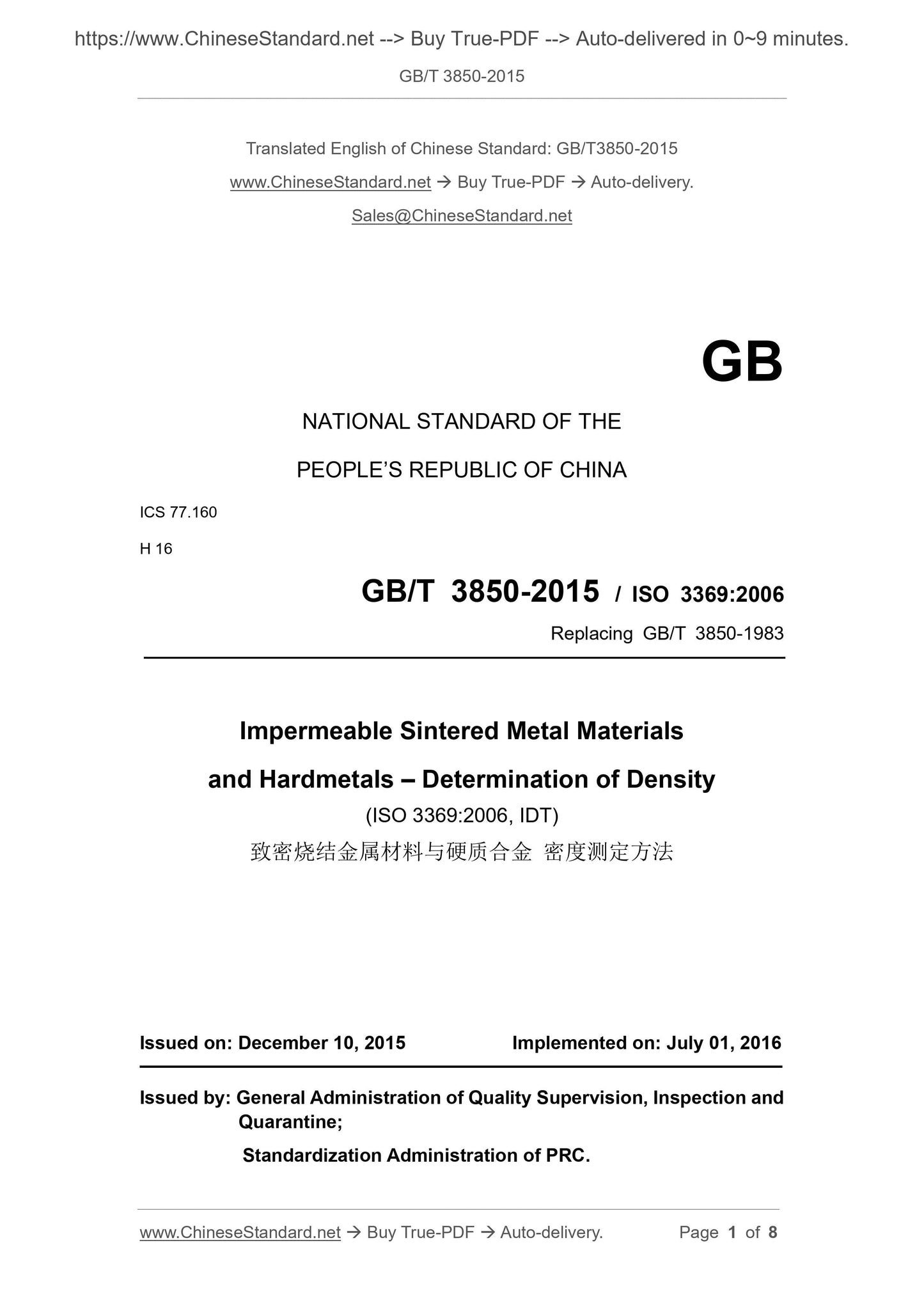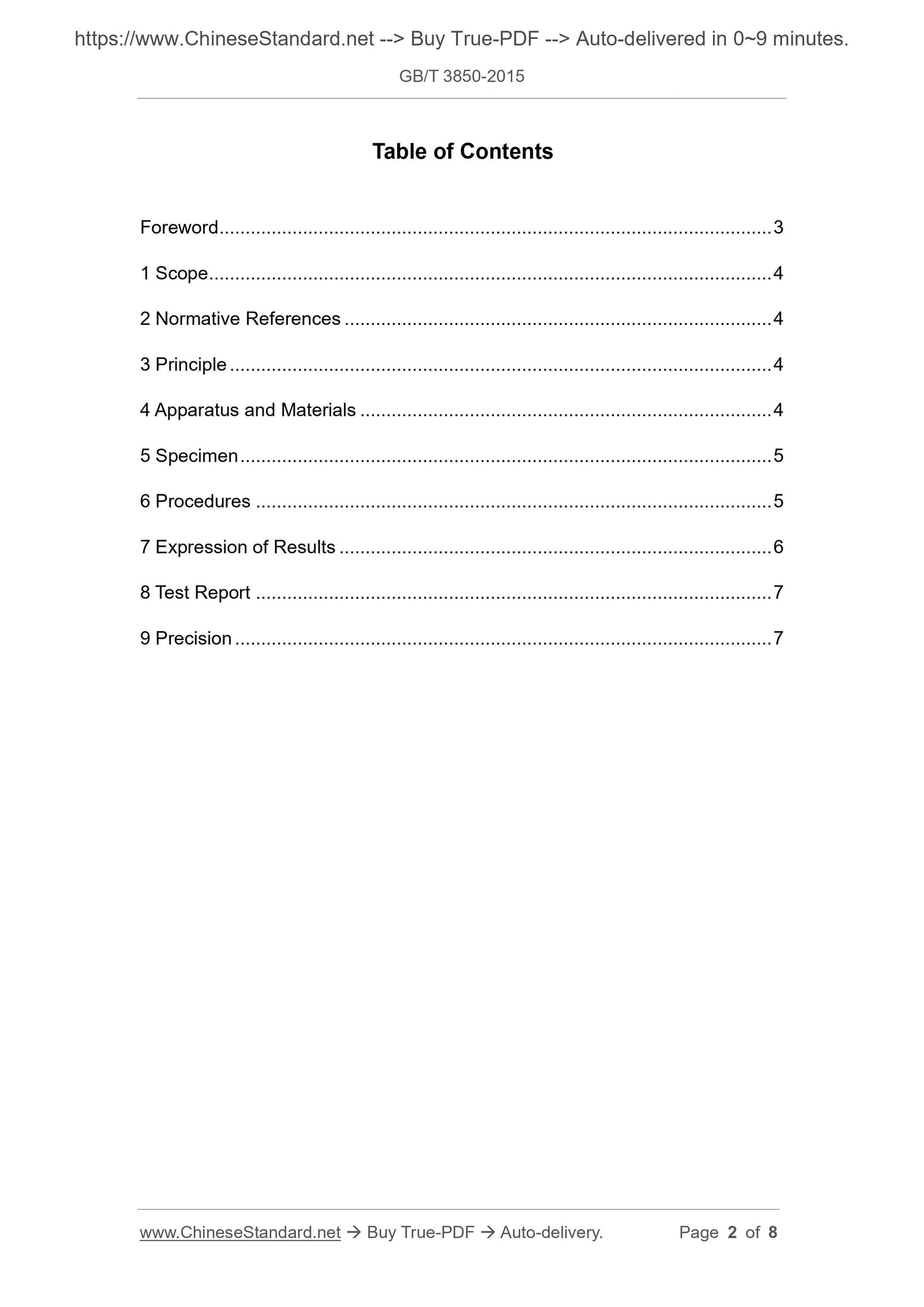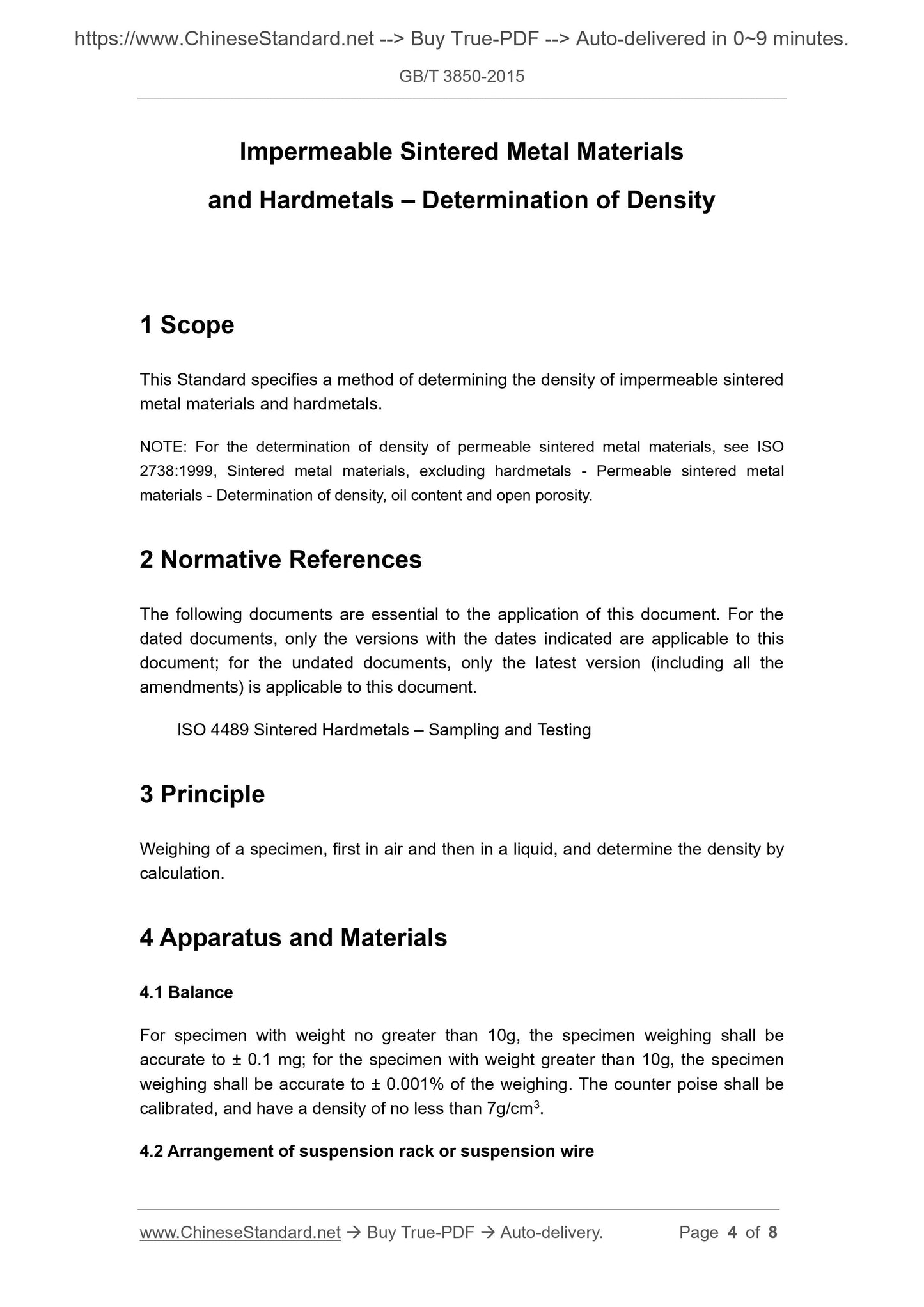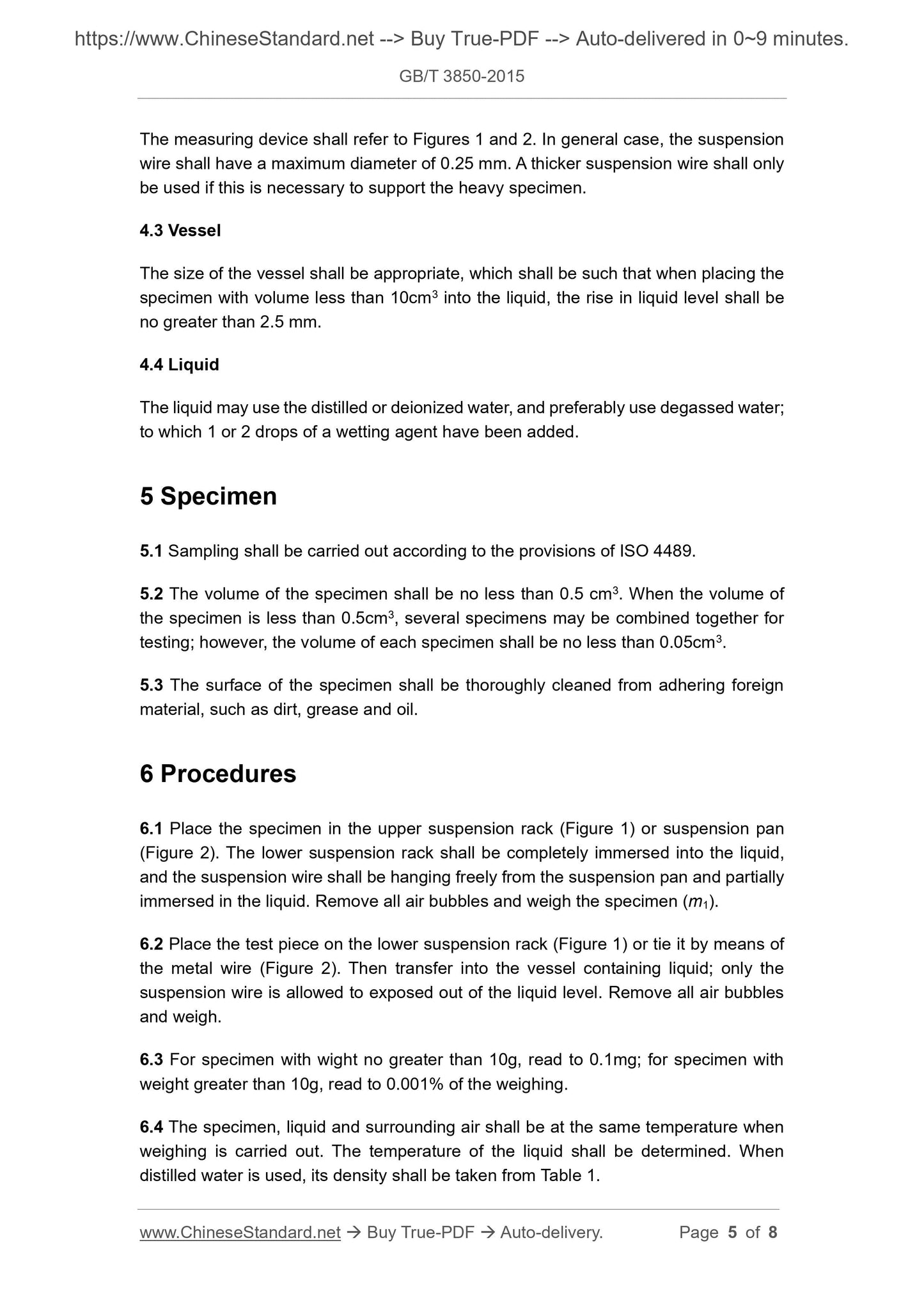1
/
of
4
www.ChineseStandard.us -- Field Test Asia Pte. Ltd.
GB/T 3850-2015 English PDF (GB/T3850-2015)
GB/T 3850-2015 English PDF (GB/T3850-2015)
Regular price
$90.00
Regular price
Sale price
$90.00
Unit price
/
per
Shipping calculated at checkout.
Couldn't load pickup availability
GB/T 3850-2015: Impermeable sintered metal materials and hard metals -- Determination of density
Delivery: 9 seconds. Download (and Email) true-PDF + Invoice.Get Quotation: Click GB/T 3850-2015 (Self-service in 1-minute)
Newer / historical versions: GB/T 3850-2015
Preview True-PDF
Scope
This Standard specifies a method of determining the density of impermeable sinteredmetal materials and hardmetals.
NOTE: For the determination of density of permeable sintered metal materials, see ISO
2738:1999, Sintered metal materials, excluding hardmetals - Permeable sintered metal
materials - Determination of density, oil content and open porosity.
Basic Data
| Standard ID | GB/T 3850-2015 (GB/T3850-2015) |
| Description (Translated English) | Impermeable sintered metal materials and hard metals -- Determination of density |
| Sector / Industry | National Standard (Recommended) |
| Classification of Chinese Standard | H16 |
| Classification of International Standard | 77.160 |
| Word Count Estimation | 6,621 |
| Date of Issue | 2015-12-10 |
| Date of Implementation | 2016-07-01 |
| Older Standard (superseded by this standard) | GB/T 3850-1983 |
| Quoted Standard | ISO 4489 |
| Adopted Standard | ISO 3369-2006, IDT |
| Regulation (derived from) | National Standard Announcement 2015 No.38 |
| Issuing agency(ies) | General Administration of Quality Supervision, Inspection and Quarantine of the People's Republic of China, Standardization Administration of the People's Republic of China |
| Summary | This standard specifies the density of sintered metal materials and cemented carbide density measurement method. |
Share







